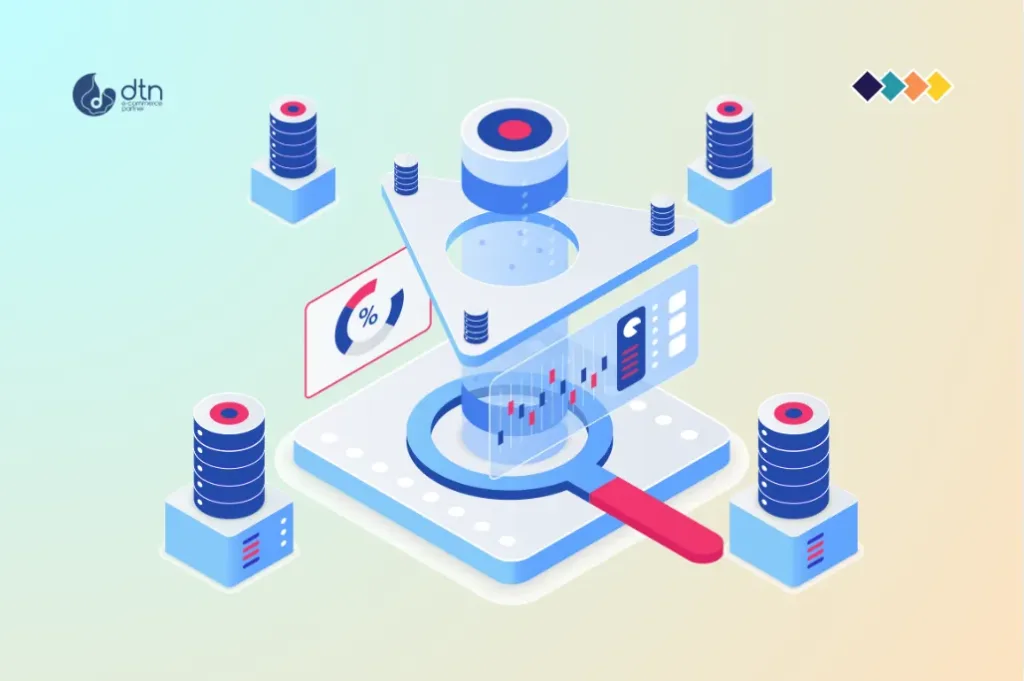In the highly competitive landscape of e-commerce, maximizing revenue isn’t just about driving sales – it’s about crafting a seamless experience that fosters loyalty and encourages repeat purchases. This is where cross-selling comes into play, a powerful strategy that leverages the customer’s current purchase to suggest additional items, thereby increasing the average order value and overall revenue.
However, successful cross-selling hinges on providing relevant and personalized recommendations that resonate with the customer’s individual needs and preferences. This is where smart recommendation engines step in, revolutionizing the way e-commerce businesses approach cross-selling.
Table of Contents
Understanding the Power of Smart Recommendation Engines
Imagine a customer browsing for a new pair of running shoes. Instead of bombarding them with random suggestions, a smart recommendation engine analyzes their browsing history, past purchases, and even demographic data to understand their specific needs. The engine then presents curated suggestions like running socks, a water bottle, or a heart rate monitor, effectively catering to their specific running interests.
This seemingly simple act of personalization transforms the customer’s experience:
- Enhanced Customer Satisfaction: Relevant recommendations make customers feel understood and valued, fostering a positive shopping experience.
- Increased Average Order Value: By prompting additional purchases, cross-selling directly contributes to higher order value and revenue growth.
- Improved Conversion Rates: Well-timed recommendations can nudge hesitant customers towards making a purchase, leading to higher conversion rates.
- Boosted Customer Loyalty: Personalized experiences build trust and loyalty, encouraging customers to return for future purchases.

Deconstructing Smart Recommendation Engines: How They Work
These intelligent systems leverage a combination of sophisticated algorithms and vast data analysis to provide accurate and personalized recommendations.
- Data Collection and Analysis: The engine gathers data from various sources, including browsing history, purchase history, demographics, product reviews, and even social media interactions. This data is then analyzed to identify patterns and insights about customer behavior.
- Algorithm Selection: Different algorithms are employed based on the specific use case and desired outcome. Popular algorithms include:
- Collaborative Filtering: Analyzes the behavior of similar customers to predict what the current customer might like.
- Content-Based Filtering: Recommends products based on similarities to items the customer has already interacted with.
- Hybrid Recommendations: Combines various algorithms to provide a more comprehensive and accurate recommendation.
- Recommendation Generation: Based on the data analysis and algorithm selection, the engine generates a list of personalized product recommendations tailored to each customer.
- Dynamic Presentation: The recommendations are dynamically presented in various ways, such as product carousels, pop-ups, or sidebar suggestions, ensuring they integrate seamlessly into the overall user experience.

Beyond the Basics: Advanced Features of Smart Recommendation Engines
To truly maximize the potential of cross-selling, modern recommendation engines offer advanced features:
- Real-time personalization: Recommendations adapt in real-time based on the customer’s current browsing behavior and actions.
- Predictive Analytics: The engine can anticipate future needs and predict what customers might be interested in before they even know it themselves.
- A/B Testing and Optimization: Continuously analyzing and optimizing recommendations based on performance metrics to ensure the highest level of effectiveness.
- Integration with CRM Systems: Seamless integration with existing customer relationship management systems provides a unified view of customer data, enabling more informed and targeted recommendations.

Implementing Smart Recommendation Engines: A Practical Guide
Integrating a smart recommendation engine into your e-commerce platform can seem daunting, but with careful planning and execution, it can be a smooth process:
- Choose the Right Engine: Consider your specific needs, budget, and technical expertise when selecting a recommendation engine provider.
- Data Preparation: Ensure your data is clean, organized, and relevant for the engine to analyze effectively.
- Configuration and Integration: Work with the provider to configure the engine according to your specific requirements and seamlessly integrate it into your platform.
- Testing and Optimization: Continuously test and analyze the performance of your recommendations to identify areas for improvement and ensure they are driving positive results.
- Monitor and Adapt: Regularly monitor the engine’s performance, identify trends, and adapt your recommendations based on changing customer behavior and market dynamics.

The Future of Cross-Selling: Beyond Traditional Recommendations
As technology advances, the future of cross-selling holds exciting possibilities:
- AI-powered personalization: Leveraging Artificial Intelligence (AI) to create even more personalized and predictive recommendations based on deep learning algorithms.
- Voice-activated recommendations: Integrate recommendations into voice assistants, enabling a more intuitive and conversational shopping experience.
- Augmented and Virtual Reality (AR/VR) recommendations: Immersive technologies can provide customers with interactive and engaging product recommendations, fostering a more personalized and impactful experience.

Conclusion: Embracing the Power of Smart Recommendations
Smart recommendation engines are no longer a luxury – they are an essential tool for any e-commerce business aiming to achieve sustainable growth. By leveraging the power of data and personalized recommendations, businesses can elevate customer experience, boost revenue, and build lasting loyalty.
As technology continues to evolve, the potential of these intelligent systems will only grow, offering exciting opportunities for e-commerce businesses to unlock new levels of success in the ever-competitive online marketplace.
Frequently Asked Questions
We’ve compiled a list of answers to common questions.
What is a smart recommendation engine in e-commerce?
A smart recommendation engine uses data and algorithms to analyze customer behavior and preferences, offering personalized product suggestions to enhance the shopping experience.
How does cross-selling benefit e-commerce businesses?
Cross-selling increases average order value by suggesting relevant additional products to customers, which boosts revenue and enhances customer satisfaction.
What types of data do recommendation engines use to generate suggestions?
Recommendation engines analyze browsing history, purchase history, demographic data, product reviews, and social media interactions to provide personalized product recommendations.
What are some advanced features of modern recommendation engines?
Advanced features include real-time personalization, predictive analytics, A/B testing, and seamless integration with CRM systems for more targeted recommendations.
How can businesses implement a smart recommendation engine effectively?
To implement a recommendation engine, businesses should choose the right provider, prepare their data, configure and integrate the engine, and continuously test and optimize the recommendations.



